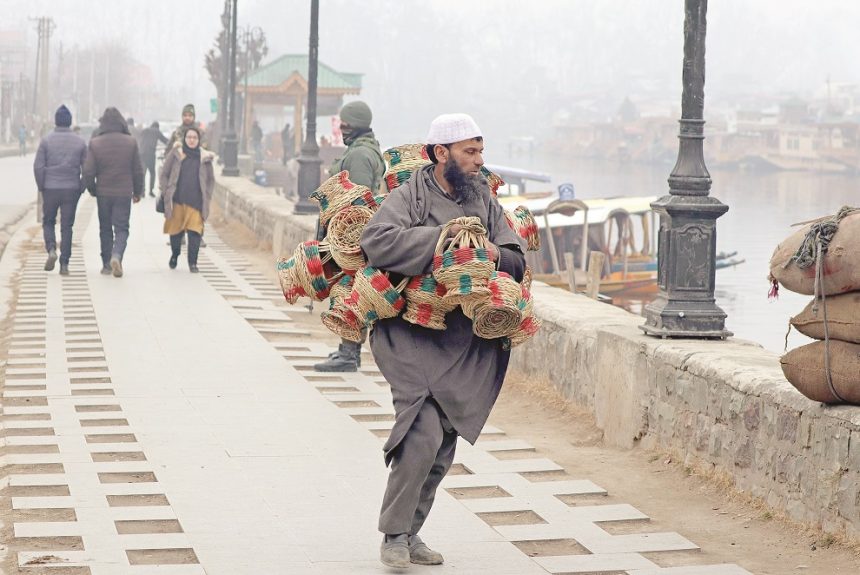Kashmir is all set to record 2024 as one of the driest years, with the yearly precipitation deficit surpassing 45%. In comparison, last year, the region experienced a deficit of 21.60%.
According to data gathered by Rising Kashmir from the Meteorological Department in Srinagar, the Valley has been experiencing persistently dry weather, especially in the latter half of the year. From October 1 to December 12, the region faced a significant 86.34% deficit in rain and snow-fall.
Figures from January and February 2024 reveal a staggering 48.04% precipitation deficit, with only 96.38% of the expected rain and snowfall recorded, against a normal of 185.48%.
“From June 1 to September 30, the region saw 45.11% less rainfall,” the data reveals. “In the same period last year, the deficit was just 12.25%.”
Interestingly, from March 1 to May 31, Kashmir recorded 318.36% of the expected precipitation, resulting in a minor deficit of just 0.72%. However, the situation worsened dramatically from June to December, with extremely low precipitation recorded during this period.
The overall precipitation deficit for 2024 stands at 45.05%, compared to just 14.77% last year, according to the figures.
In an exclusive conversation with Rising Kashmir, Farooq Ahmed, Scientific Officer at the Me-teorological Department in Srinagar, attributed the reduced precipitation to various factors, in-cluding changes in wind patterns from the Mediterranean and Black Sea, which are critical sources for Western Disturbances (WDs) that bring rain and snow to Kashmir.
“Both the seas (Mediterranean and Black Sea) are the places where WD’s originate. In absence of strong wind patterns and proper moisture, WDs become feeble. From the seas, the WDs travel to Iran, Afghanistan, Pakistan and then enter into Kashmir,” he said.
“One of the primary reasons for less precipitation is the change in wind patterns and the reduced moisture levels in these seas,” Ahmed explained. “These seas are where WDs originate, and when wind patterns and moisture are weak, these disturbances become feeble, bringing minimal snow or rain, mainly affecting the upper reaches of the Valley.”
Ahmed further explained that weak WDs struggle to reach the plains, resulting in light snowfall or rain in the higher elevations, which was observed a few days ago. “We’ve seen that these dis-turbances are unable to reach the plains of the Valley due to their feebleness,” he added.
On whether Kashmir will experience the driest season on record (October to December), Ahmed confirmed that given the considerable deficit in rainfall and snowfall, this season will likely be remembered as the driest ever.
He, however, said, “All eyes are on winter now. The current weather prediction suggests no sig-nificant wet spells for Kashmir until December 20, with only light snowfall expected at isolated places on December 21 and 22.”
Independent weather forecaster Faizan Arif, known for his accurate predictions, stated that while Western Disturbances are a key factor, climate change is also contributing to prolonged dry spells.
“Climate change has disrupted global weather patterns, leading to more frequent dry spells com-pared to previous decades,” Arif said. “These disruptions are likely to continue, leading to more frequent dry periods in the future, which could result in lower water levels and water scarcity in some areas.”
He stressed that this issue isn’t solely the result of recent actions but has been decades in the making. “This is the cumulative effect of 75 years of insufficient action by governments world-wide. Without strong, decisive leadership, the consequences of climate change will only worsen,” Arif stated.








